Search Images
Browse Content (p. 1423)
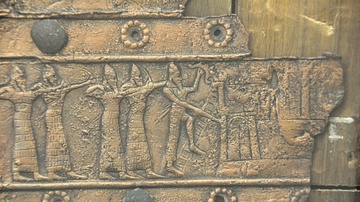
Image
Siege Scene from Balawat Gate
Detail of the bronze casing of the Balawat gate. From Balawat (Imgur-Enlil), northern Mesopotamia, Iraq. Neo-Assyrian Period, reign of King Shalmaneser III, 858-824 BCE. (Ancient Orient Museum/Istanbul Archaeological Museums, Istanbul, Turkey...
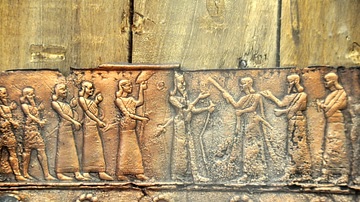
Image
Shalmaneser III, Balawat Gate
Detail of the bronze casing of the Balawat gate. From Balawat (Imgur-Enlil), northern Mesopotamia, Iraq. Neo-Assyrian Period, reign of King Shalmaneser III, 858-824 BCE. (Ancient Orient Museum/Istanbul Archaeological Museums, Istanbul, Turkey...
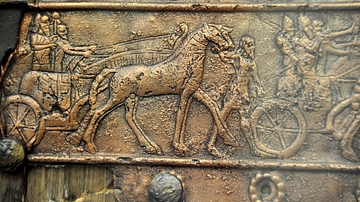
Image
Royal Chariot from Balawat Gate
Detail of the bronze casing of the Balawat gate. From Balawat (Imgur-Enlil), northern Mesopotamia, Iraq. Neo-Assyrian Period, reign of King Shalmaneser III, 858-824 BCE. (Ancient Orient Museum/Istanbul Archaeological Museums, Istanbul, Turkey...
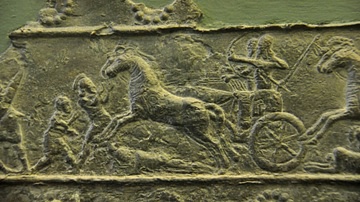
Image
Detail of Balawat Gate
Detail of the bronze casing of the Balawat gate. From Balawat (Imgur-Enlil), northern Mesopotamia, Iraq. Neo-Assyrian Period, reign of King Shalmaneser III, 858-824 BCE. (The British Museum, London)
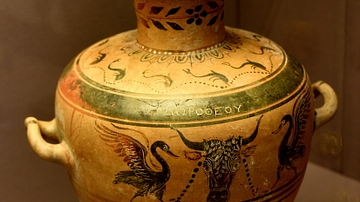
Image
Hydria Decorated with Boukranion
This hydria (water jar) was decorated with a central boukranion (bull's head) which is flanked by two swans. The vase is inscribed around the shoulder with the name of the deceased, DOROTHEOU, whose ashes it contained. The name DOROTHEOU...
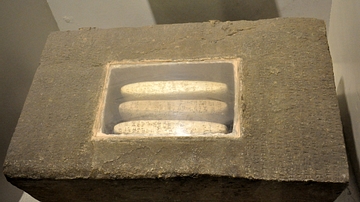
Image
Limestone Box with Foundation Tablets from Balawat
This box was placed in the temple of Mamu, God of Dreams. The box is original but the tablets are plaster casts of the originals; they describe the titles and achievements of Ashurnasirpal II (reigned 883-859 BCE). They narrate how he built...
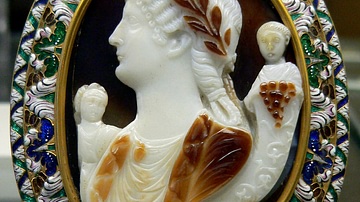
Image
Valeria Messalina Cameo
A cameo depicting Valeria Messalina and her children, wife of Roman emperor Claudius. (Cabinet des Médailles, Paris)
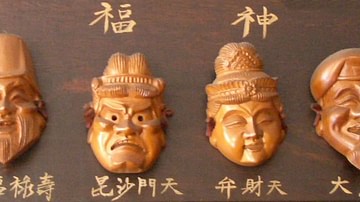
Image
Seven Lucky Gods
The Seven Lucky Gods or Shichifukujin of Japanese folklore. From left to right: Soldan Sağa Hotei, Juroujin, Fukurokuju, Bishamonten, Benzaiten, Daikokuten, Ebisu
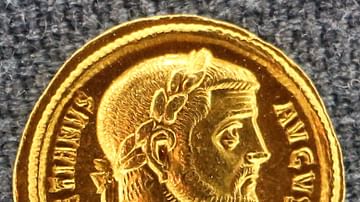
Image
Aureus from Antioch
A gold aureus from Antioch depicting Roman emperor Diocletian (r. 284-305 CE).
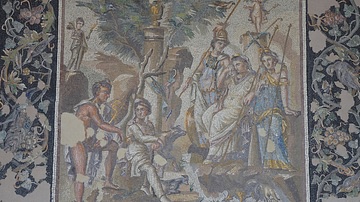
Image
Mosaic of the Judgement of Paris
A Roman floor mosaic depicting the judgement of Paris, Antioch, Syria. 115-150 CE. (Louvre, Paris)